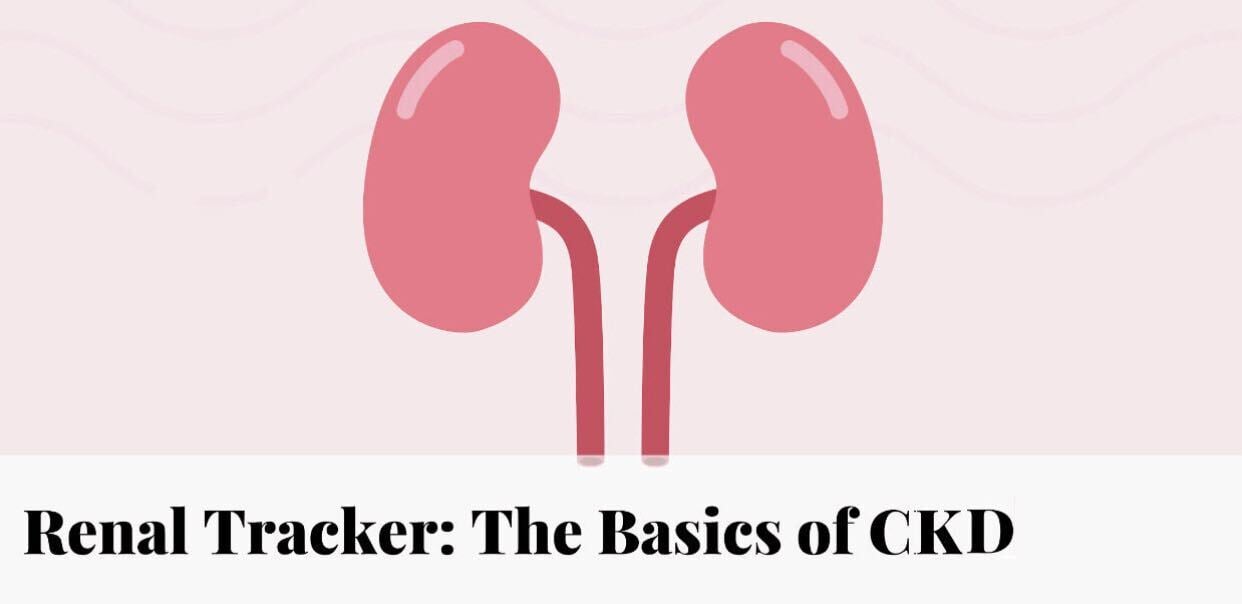
In order to understand a renal tracker in the new digital world, the basis of kidney physiology must be first understood. The kidneys are extraordinary organs so let’s dive into the fun stuff and skip all the boring details. In layman’s terms: its function is to simply retain correct volumes of water and nutrients vital for bodily functions and filter out harmful or unnecessary waste as urine. Pretty simple right? The nephrologists (kidney doctors) are probably cringing in their seats right now reading that. Yeah, you are right. It’s not that simple. But it does say “basics”!!!!
Renal Tracker
What is Chronic Kidney Disease (CKD)
Sometimes, certain risk factors can cause damage to the lining of the blood vessels inside the kidney leading to CKD (Chronic Kidney Disease) which over time (hence the word “chronic”) disrupt the ability to maintain balance in essential nutrients, water, hormones, salt and mineral levels, etc. Such risk factors are listed below:
- Diabetes (#1 cause of CKD as elevated blood sugar levels can damage delicate blood vessels in the kidney)
- High Blood Pressure (Second leading cause of damaged blood vessels leading to CKD)
- Heart disease
- Family history
- Race (African Americans, Hispanic and American Indians are at higher risk than other ethnicities)
- Age (Renal function naturally decreases by 1% starting at the age of 40!)
- Other: Smoking, Obesity, Polycystic Kidney Disease, Renal Artery Stenosis, Lupus, different types of glomerulonephritis, rare types of genetic diseases, drugs that are toxic to the kidneys, infections, etc.
Okay, learning new fancy medical terms can be scary sometimes. Looking at the risk factors might also freak you out because you may actually identify with some. “Does that mean I have CKD?!?!?!? Do I need a renal tracker now?” That, my friend, is up to you! Let’s get a better understanding first…
Five Stages of Chronic Kidney Disease
There are 5 stages of CKD (listed below) and are determined by measuring the eGFR laboratory value. GFR stands for “Glomerular Filtration Rate” and is the best marker/direct measurement for estimating kidney function. A value of above 60mL/min is considered “normal”.
- Stage 1**: eGFR 90 or greater (Normal or “High-functioning” Kidneys)
- Stage 2: eGFR 60-89 (Mildly decreased function)
- Stage 3: eGFR 30-59 (Mild-Moderate function)
- Stage 4: eGFR 15-29 (Severely decreased function)
- Stage 5: eGFR less than 15 (Kidney Failure)
**Technically speaking, having normal kidneys does not classify as being a “stage” of CKD. Some scientists will argue that Stage 1 does, in fact, start at stage 2 levels. There has not been a consensus about whether the classifications have 4 or 5 stages. If you google the stages of CKD, there will be multiple valid sources that say 4 stages and multiple that say 5. Those types of minor details can be discussed with your physician as everyone has their own preferences.
Okay great… this is just a list of numbers. Now what?
Kidney Function Tests
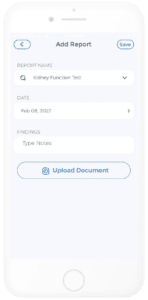
You are also able to upload via photos or simply type notes (to highlight certain values that are more important in tracking renal function). There is no way to keep track of the kidneys “naturally” and sometimes “feeling great” is simply not enough- these laboratory results are going to be your best friend.
A renal tracker app- in the palm of your hands. Click on More>Under modules: Labs & Reports>Add <specific> tests.
Kidney Diet App
When you hear the word “diet”, what are the images that come to mind? These toxic diet cultures, to say the least, have not been kind to humanity. No wonder eating disorders are estimated to affect about 9% of the world population. Constantly surrounded by the latest FAD diets (ironically also at the palm of your hands too) and social media are definitely not helping the issue here…
No more than 1200 calories consumption? Oh, wait, no carbs? Or was it that flat tummy tea that all the celebrities swear by? Or is it paleo? Veganism? Did cross-fit for 2 hours a day? Oh dear god. Maybe calling Dr. Miami might be faster…one Brazilian butt lift and tummy tuck, to-go, please!
Luckily, this is not the diet that comes to mind. People with CKD have difficulty filtering between the essential nutrients and getting rid of excess or unnecessary nutrients. This means that if a patient with CKD eats food with high levels of potassium, for example, the body cannot flush out the excess potassium that was consumed. This leads to higher levels of blood potassium which can become extremely dangerous. The lethal injection given to inmates receiving the death penalty is given a lethal amount of IV potassium that stops the heart from beating! Let that sink in for a moment…
Kidney Diet: Kidney Smart
So what is part of a “kidney diet”? As mentioned before, potassium is one of the nutrients that cannot be properly discarded in the urine. What else? CKD patients cannot also flush out phosphorus and protein! Consuming higher salt levels (>2300mg) will increase blood pressure and foods higher in “bad cholesterol” will increase the risk of heart disease which both destroys the blood vessels in the kidneys, further aggravating CKD.
Let us recap: Potassium, Phosphorus, Protein, Heart-healthy cholesterol, and Sodium (Salt).
- Salt can be difficult to cut back on. It literally is in EVERY single food. But if you cook homemade foods and avoid packaged/canned foods, you are in full control of how much salt you are ingesting. Salt-free seasonings are also in style (Mrs. Dash, anyone?).
- Always read the food labels! It is actually the law to tell the truth.
- Eat smaller portions of protein (adhere to serving sizes)
- Choose heart-healthier options such as baking instead of deep-frying, leaner meats, fresh fruits and vegetables and by limiting “saturated and trans fats”
- Choose foods that you actually like (and are more likely to adhere to it!)
- Eating healthier for your kidneys should be fun (the word “diet” cannot be spelled without the word “die”…)
- Choose foods that are lower in potassium and phosphorus
- Limit alcohol intake (this one might be self-explanatory?)
- Smoking cessation (there are some other options if quitting smoking becomes too difficult to do on your own. Consider talking to your physician for other helpful options!)
- Use the CareClinic App to help you keep track of all your dietary needs
Learn more about the nutrients and which foods are higher or lower in all mentioned above.
Renal Diet Nutrition
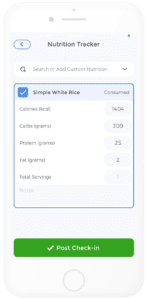
Input every meal? Seriously? Life gets busy- let’s be honest. Sometimes, inputting every single meal might seem tedious. Meal prepping might solve those issues. Cook for the week ahead! Input the meals you wish you make in bulk- to renal track for the week(s) ahead! That way, you can input your nutrition once in a while- for both your reference and your healthcare team. Here are some new exciting renal-friendly recipes.
Prevention is Key
It is also important to note here that the reason yearly checkups with your family physician are recommended is because of prevention! Even if you are lucky to have a clean bill of health (knock on wood, it stays that way), it is important to prevent CKD in the first place. There are also a lot of risk factors that can lead to CKD. These preventative health screens are to also protect you from those risk factors too! For example, if diabetes runs in your family- getting your fasting blood glucose and Hemoglobin A1C values will help you and your physician to see your baselines and how you progress over the years. This keeps you informed about your body and validates the choices you make for that body.
The Nutrition tracker can be used for general health, keeping track of caloric intake, macronutrients, etc- the uses are endless! Enjoy at your own pleasure 🙂
CKD Symptoms
After exploring just some of the ways the CareClinic Platform can help you put your health first- let’s slow down to understand the signs and symptoms to perhaps watch out for!
Unfortunately, there are no clear-cut symptoms of early-stage CKD. As the severity intensifies, edema (fluid retention) might be the first visible sign, usually located in the feet/ankle region. This means your kidneys are struggling to release excess fluids and salt from your body. Other symptoms of more advanced CKD are:
- Chest pain
- Dry skin
- Itching or numbness
- Feeling tired
- Headaches
- Increased or decreased urination
- Loss of appetite
- Muscle cramps
- Nausea
- Shortness of breath
- Sleep problems
- Trouble concentrating
- Vomiting
- Weight loss
- Anemia
- Malnutrition
Can you give fluids in CKD?

So not only will you be busy planning your renal diet but you will also need to be monitoring your fluid intake as well. To stay on top of your renal diet nutrition (fluids and food) and to delay progression, the CareClinic App also allows you to keep track of the fluid intake using our “Fluids Tracker”. This can be done easily through the app with the click of a button. No more headaches and fuss.
The amount that you may need will differ between individuals therefore, it is crucial to discuss what amount is right for you with your physician. It not only allows you to track water- but any other custom fluids such as juices, energy drinks, coffee, etc. It is also important to notify your healthcare professional as some may be detrimental to your health.
“Eye-balling” is now officially a problem of the past! Precision is the new trend! The app allows you to check in daily- with dated logs to keep you on track with fluids intakes and all of your other health needs as well.
Kidney Dialysis or Kidney Transplant
Usually, these two options are left for people with end-stage kidney failure. Even at this stage, some may choose to decline these options and continue with renal diet nutrition and conservative measures. However, it may be unlikely. On a brighter note, most people who live with CKD can perform day-to-day activities and is less debilitating than led on. Regardless of the options, it is important for the patient to autonomously choose what is best for them (after counselling with their healthcare teams and loved ones).
How do you Treat CKD?
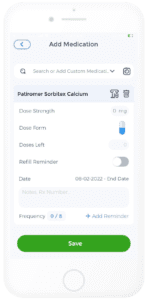
But wait, someone with CKD cannot handle the increased potassium? Correct! If this happens (and the reason why monitoring lab values are crucial), the healthcare team might decide on using a medicine that “binds to potassium” called: Potassium-binding agents! Definitely did not take a genius to name that one…
For example, a potassium binding agent that can be used is a Patiromer (noted on the picture on the right). You can use the “Medication Tracker” to input all of your medications (as well as dose strength, form, doses left and even put refill reminders!). The CareClinic App allows you to track all medications (especially if you have co-existing conditions like diabetes etc). Taking medications can become extremely difficult, especially if you have more than one.
What Supplements are Good for Kidney Disease?
You can also use this to record any other over-the-counter supplements you take. That way, you have a method of showing your physician as knowing such information can be useful. Sometimes, just prescription medication is enough or vice versa! Some supplements can alter the levels of potassium or other minerals in your body (due to interactions). Being upfront with your intake can create a clearer picture for your healthcare professional and a better care plan for you.
The last thing you want to be doing is thinking about your next dose. Time is valuable. Let’s not waste it!
Renal Tracker App
You’ve read this far. You deserve a bonus!
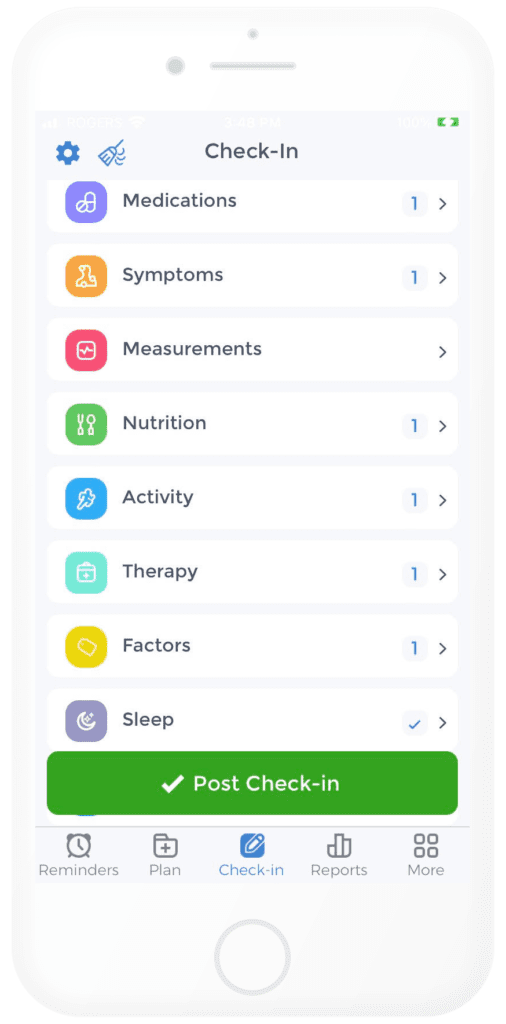
Think about it this way: If you are not sleeping well, not performing daily physical activity, have healthy ways to cope with stress or other mental health issues, etc., staying on top of your health will be very difficult. This falls true for not just keeping an eye on your kidneys! Too many people believe physical health and mental health are separate entities, but they work concurrently and overlap more than people should believe. The CareClinic App has features that allow you to track such “external factors” on the main Check-In page. Factors such as basic health measurements (i.e. blood pressure readings), Activity (i.e. meditation or running, etc), Therapy (i.e. 1-hour session with a psychiatrist), Sleep (how many hours, how you felt when you woke up), and Factors (i.e. menstruation or general) for a better outcome!
Always remember: you deserve this! Start taking full control of your health. Forget New Year Resolutions. The best thing you can invest in is yourself! Your Health= Wealth.
Free Renal Tracker
As an extra-extra bonus, there is a company worth mentioning here. A program called “Kidney Smart” where they have kidney experts (both in-person and virtual) that educate in the United States at NO-COST to you.
The CareClinic App can be your handy renal tracker app; located right at your fingertips! It can behave like your own personal renal tracker, renal diet planner, CKD Renal Tracker- or whatever else you wish it to be. The CareClinic platform is a one-stop shop for all your healthcare needs. It can be an effective tool for your healthcare plans both now and in the future. Begin using it now with your iOS or Android devices by clicking below.
References
U.S Department of Health. (2017). Chronic Kidney Disease. The National Institute of Diabetes and Digestive and Kidney Diseases. https://www.niddk.nih.gov/health-information/kidney-disease/chronic-kidney-disease-ckd/what-is-chronic-kidney-disease


